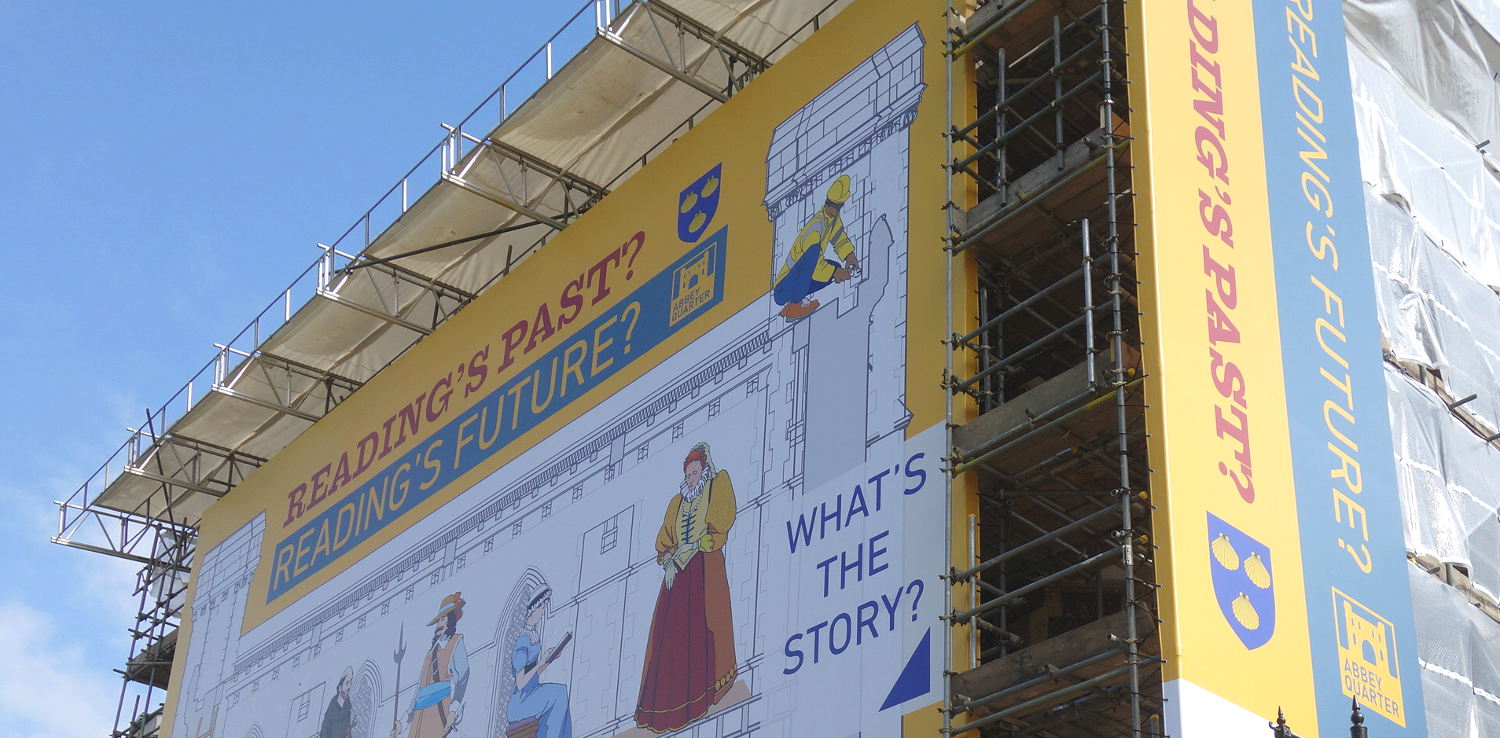A key part of the ‘Reading Abbey Revealed’ project was creating new signage and interpretation across the Abbey Quarter including:
- Temporary interpretation during the conservation and building work, including scaffold banners, leaflets, 'Abbey on Wheels' pop-up displays, audio units and an exhibition at Reading Museum.
- A new Story of Reading Gallery at Reading Museum that opened on 12 February 2018, it explores the abbey's history and its impact on the town. It is the best place to start your visit to the Abbey Quarter.
- 27 information panels to explain the history of the Abbey Quarter and interpret the Abbey Ruins, installed in June 2018.
- Directional signage linking the Reading Abbey Quarter from the railway station and The Oracle, and the wider town centre, installed in summer 2018.
- An interactive online map of the Abbey Quarter on this website.
New Museum Gallery
The new Story of Reading Gallery on the ground floor of Reading Museum explores the history of Reading Abbey and its links to the town's development. The new gallery opened on 12 February 2018 and acts as a starting point for visiting the Abbey Quarter. Our blog describes how we went about creating this new exciting gallery. Further displays covering Reading's post-abbey history opened in early 2019.

Contractors putting finishing touches to a replica cloister column in the new Reading Museum gallery
Interpretation panels
A key part of this project is putting 27 new interpretation panels across the Abbey Quarter and town centre highlighting the Abbey’s history. A prototype display panel about St. Mary’s Church was displayed in the Reading Abbey Quarter: Then & Now exhibition, in the Sir John Madjeski Gallery at Reading Museum over summer 2017. Museum staff and volunteers asked visitors for their views on the panel’s style, colour and how clearly the historical information was explained.
In September 2017 this panel was redesigned based on our visitor feedback and moved to outside St. Mary’s Church, near the Minster Street entrance of John Lewis, where our volunteers and staff asked passers-by for their views. The results from these surveys have helped us assess the appeal and interest in these boards and then tailor the other panels created for the Abbey Quarter.
We have already shared some of your feedback on the Reading Museum blog.

New interpretation panel in the Abbey Ruins, 2018
Temporary interpretation
Our temporary works included a colourful scaffold banner on the exterior of the Abbey Gateway. This banner showed a group of historical characters from the Gateway's history, including Queen Elizabeth I who lived here, Jane Austen who went to school here, and Sir George Gilbert Scott who restored the Gate. There was also a temporary information point with audio at the Gateway.

The temporary scaffold banner on the Abbey Gateway in May 2017





